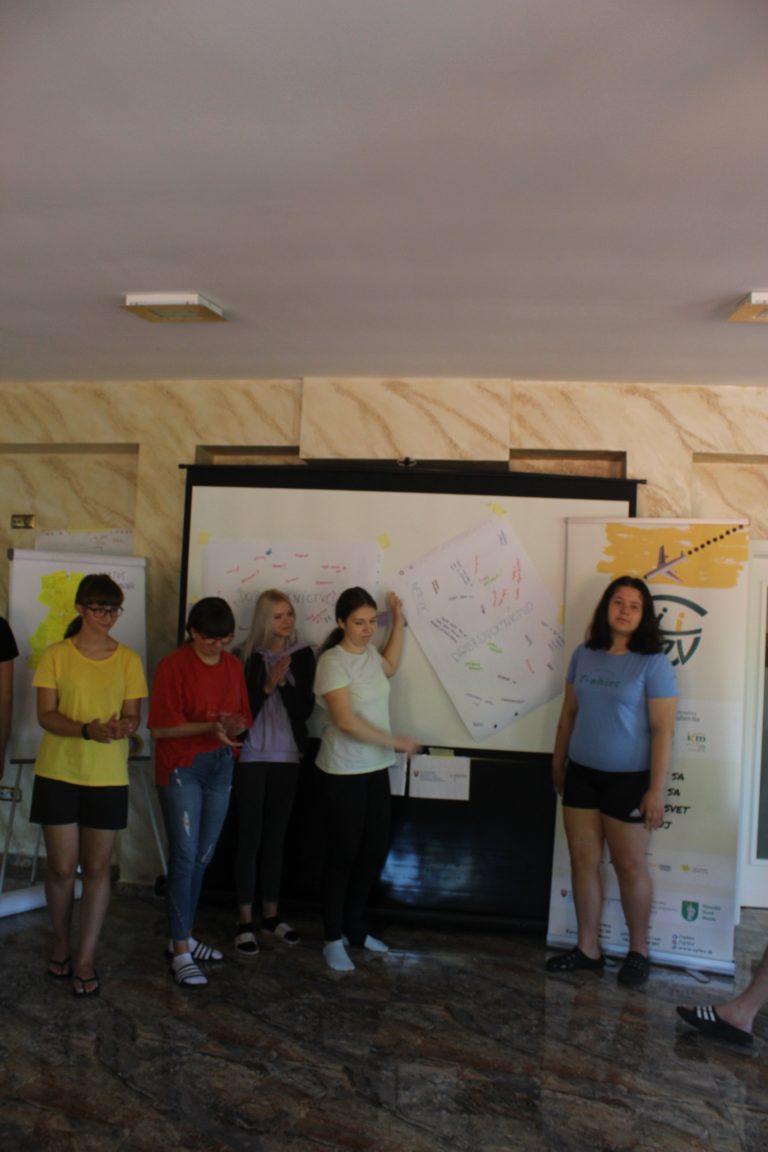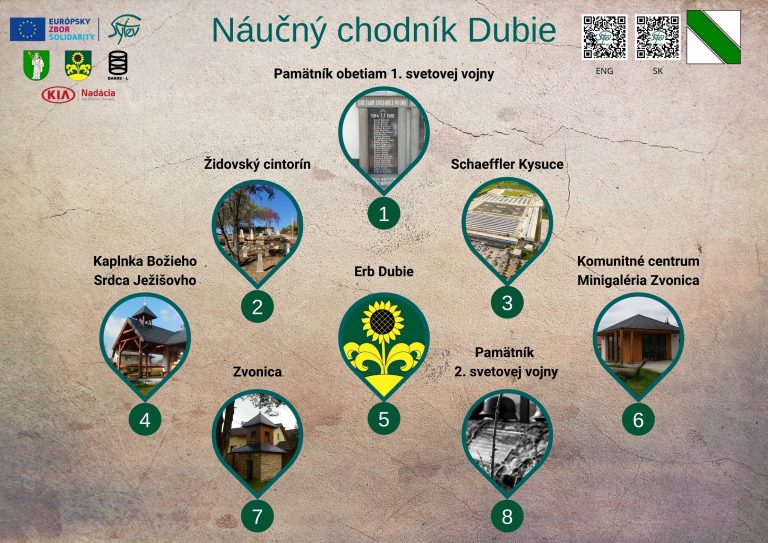
The memorial commemorates and worships the 54 fallen citizens of Kysucké Nové Mesto during the First World War. During the Great War, as it was called until now, more than 11 and a quarter of a million soldiers were involved, of whom 9.6 million were killed, 7 million civilians and more than 20 million people were wounded. At that time, the district of Kysucké Nové Mesto fell under the Trenčín. It was from this county but also from others that the 71st Infantry Regiment was added, also called the Wire Regiment, and most of our natives enlisted in this regiment. In the structures of this regiment, the citizens of KNM fought and died in the Carpathians, Lublin, Galicia, but also on the Italian front on the river Piava.
The stories of these soldiers were mostly forgotten, but one tragic story was preserved thanks to prof. Tarábek. The 51st mentioned name is Róbert Tesárek. He was a teacher and the first director of a state school, which was then housed in a school building near the railway station – today’s art school. It was he who planted the famous sad willow, which grew on the edge of the school garden until the year 2000, and with it several fruit trees. He was allegedly a supporter of Pan-Slavism and was therefore to be sent to the front among the first. As a teacher, he was awarded the rank of lieutenant. On one of the first battlefields of the Eastern Front – in Galicia – he was shot by a Russian sniper during a lunch break during a meal. He must have chosen the carpenter because of his rank as an officer. The witness of this event was Ignác Čuntala, who was lucky and survived the war rage, and later told this story to the aforementioned prof. Jozef Tarábek.
It’s Monday, November 11, 1918, 5 p.m. A German peacekeeping delegation led by Matthias Erzberger recently entered a railway car parked in the Compiègn Forest. There, they are already waiting for representatives of France and Great Britain, led by the highest military representative of the Agreement – French Marshal Ferdinand Foch. A ceasefire is being signed between the troops of the Agreement and Germany. The drying ink on the peace treaty, which comes into force at 11 a.m., is the definitive point after World War I, then still called the Great War. He’s conquered. It is the end of a four and a quarter war frenzy, at the end of which millions are dead, maimed and wounded and Europe is economically, economically and morally disrupted.
However, it is impossible not to look back. In order for humanity to rework this memorial day, it had to go through the tragic and painful path that began with the Sarajevo assassination of the heir to the Austro-Hungarian throne, Franz Ferdinand Ed Este, and his wife. Thoughts of the end of the war were replaced by horror and horror after the massacres at the Marne, Ypres, Tanenberg, Gallipoli, Verdune, Western Dvina, Jutland peninsula, the stalemate in Galicia and Bukovina, the slaughterhouse on the Piave, the Passchendael or the signing -Lith peace between Germany and the Soviet Union.
It’s time to count the losses. The Great War was the largest war in history to date. 112 and a quarter million soldiers were mobilized and thrown into the fighting, 9.6 million were killed, 7 million civilians were killed and more than 20 million were injured. Of this total, more than 8 million French and 12 million Russian have not returned home to their families; 5.7 million British; 4.7 million US; 5.1 million Italians; 1.2 million Romanian, 13 and a quarter million German, 7.8 million Austro-Hungarian and almost 3 million Ottoman soldiers. To make matters worse, in the last year of the war and the following two, the Spanish flu pandemic claimed at least another 6 million lives.
But it was not just the dead who left this world. The Austro-Hungarian monarchy, the Russian imperial monarchy, the German Empire and, a little later, the Ottoman Empire were introduced into history, and Czechoslovakia, Hungary, Austria, the Kingdom of Serbs of Croats and Slovenes, the Soviet Union and the German Republic were founded on their foundations. The whole countries of the Hungarian crown fell to Poland and Romania. Old Europe was in ruins …
A bloody meat grinder named after World War I also killed many of our natives. Paradoxically, there were many more of them than in the bloodiest war – World War II, which flared up in twenty years. At that time, the district of Kysucké Nové Mesto correctly belonged to the Trenčín County. It was from Trenčín, but also Orava and Turčianská counties that the 71st Infantry Regiment of Trenčín was mostly supplemented by recruits. Most of our natives enlisted in this unit, also called the Wire Regiment. In the structures of the 71st Regiment, the Kysucans fought and died in the Carpathians, Lublin and Galicia, and later on the Italian front on the Piave River. In June 1918, when he was stationed in Kragujevac, Serbia, soldiers provoked a revolt against the officers. After the rebellion was suppressed, 44 of them were executed.
We are standing in front of a memorial plaque with the names of 54 fallen citizens of Kysucké Nové Mesto. The plaque could be installed in the old cemetery on the site of today’s park to be installed by the city’s board in the 1920s. But is everyone here? How many nameless victims were there? At today’s level of research, we know of the other four names of the Kysuckonovomestans: František Grešák, Andrej Masarik, Johann Heynyik and Martin Hošták. From the local part – then still independent municipalities, three from Budatínská Lehota were added: Ondrej Čelko, Michal Istenčin and Ján Rudinec, as well as three from Oškerda: Ondrej Ozančin, Ján Janík and Ján Škulec. Although the district of Kysucké Nové Mesto was much larger, only from the villages of today’s district we get to the following number of fallen: Lopušné Pažite – 9, Kysucké Nové Mesto – 58 Budatínska Lehota – 3 Oškerda – 3, Nesluša – 65, Kysucký Lieskovec – 12, Rudina 17, Rudinská – 32, Horný Vadičov – 9, Lodno – 9, Ochodnica – 24, Radoľa – 7, Snežnica – 4, Povina – 3, which represents 255 men young but also in middle age, as during the war the oldest mobilized year was 1865, whose men were 53 years old at the end of the war.
Such an outflow of men of productive age must have left a deep mark in all spheres of life of towns and villages. The role of head of the family had to be represented by women or young people who were not yet subject to the obligation to attend a levy. Agriculture, trade, industry suffered as a result. The tax burden of the population increased, agricultural products, industrial commodities and others were requisitioned in favor of the army.
Even the church, at that time strongly connected with the state and the person of the monarch, did not resist confiscations, when the bells were confiscated and melted for arms production. In 1917, two bells were taken from the tower of the church of St. Jakuba.
The information collected and processed the text: Mário Jáník, Museum of Kysuce in Čadca
Translation: Matúš Maljar



